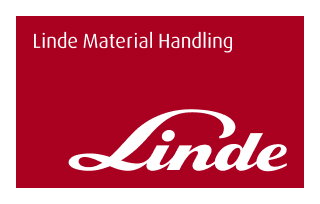- Blog
- Technical


When planning for the future of your warehouse or logistics operation, understanding your forklift’s lifespan is essential. The forklift lifespan isn’t just about how many years the machine runs, it’s about how many productive, safe and cost-effective years you’ll get from your investment. Knowing what drives that lifespan lets you choose wisely and manage your fleet proactively, rather than reactively.
From how often your machine works, to the loads it moves, the environment it operates in, and the quality of care it receives; many factors determine a forklift’s lifespan.
Understanding the lifespan of your forklifts has real business value:
In short, your forklifts are more than just workhorses; they’re strategic assets. Managing their lifespan wisely helps you save money, boost throughput, and ensure safety.
A forklift used 24/7 in a heavy-duty outdoor yard will reach wear limits faster than one used lightly indoors.
The heavier the loads handled, the greater the stress on the mast, hydraulics, tyres, engine/motor, all of which accelerate wear and ageing.
Example: A forklift working 10 hours a day with near-capacity loads will generally have a shorter service life than one used for only four hours a day lightly loaded.
Operating environment (indoor vs outdoor conditions)
Indoor, climate-controlled warehouses are gentler: Less exposure to dust, moisture, extreme temperatures and corrosive elements.
Outdoor or mixed-use conditions (rain, sun, salt air, rough terrain) impose more stress: Corrosion, tyre wear, fuel/engine stress and electrical strain.
Forklifts used in harsh or dirty environments often require more frequent servicing and may reach end-of-life sooner unless managed accordingly.
Operator habits (safe handling, avoiding misuse)
Safe, knowledgeable operators extend lifespan: They avoid rapid starts and stops, overloading, improper turning and braking, and impacts and collisions.
Misuse, including overloading, aggressive handling, ignoring operator platform ergonomics, accelerates wear on tyres, hydraulics, drive train, and the steadiness of the truck.
Example: If operators always load above rated capacity or drive with raised forks, the mast and hydraulics wear prematurely.
Maintenance frequency (scheduled inspections and servicing)
Regular maintenance, such as oil, fluids, filters, brakes, tyres, battery care, and hydraulic checks, catches small issues before they become large.
A forklift that receives consistent servicing will last significantly longer than one only repaired when broken.
Skipping preventive maintenance shortens lifespan and increases total cost of ownership.
Quality of parts and tyres used
Using genuine manufacturer parts, high-quality tyres and correct lubricants ensures that components perform as designed.
Cheap or mismatched parts may degrade faster, reduce reliability and shorten the effective lifespan.
Example: Sub-standard tyres in rough terrain may lead to quicker rim, axle or drive motor damage which cascades into further wear.
By scanning these factors regularly, you can monitor your fleet proactively and make data-informed decisions about usage, service intervals and replacement planning.
Routine maintenance is the single most influential factor under your direct control. A well-maintained forklift is a long-lived forklift:
Regular oil changes, filter replacements, and fluid top-ups ensure the engine or motor, hydraulics and drive train operate smoothly, reducing internal wear.
Tyre checks, such as correct pressure and wear inspection, prevent poor traction, uneven loading and associated stress on axles or motors.
Brake inspections and tuning ensure safe stopping, which protects the drive system, chassis and structure from undue strain.
Scheduled servicing catches minor failures early, avoiding cascading damage that shortens the unit’s lifespan.
Yes, the type of forklift (electric versus diesel) and the application influence how long it lasts. Here’s how:
Electric forklifts:
Generally lower maintenance (no internal combustion engine oil changes, fewer moving parts), so fewer wear points.
With proper battery care and charging regimes, electric trucks can have very long lifespans in indoor or moderate-use settings.
Ideal for warehousing, indoor applications, or mixed-use with controlled environments.
Diesel (or internal combustion) forklifts:
Built for heavy-duty, outdoor, rugged usage, often in tougher conditions.
They require more frequent maintenance, such as engine servicing, filters, and exhaust systems, and are exposed to harsher environments.
With the right maintenance and usage, they still last long, but potential lifespan may be influenced by environmental stress and maintenance regime.
The Linde MH product range covers both electric and diesel models, designed with advanced engineering for durability, reliability and uptime. When choosing the right type, consider your environment, load-profile and maintenance capacity, all of which affect a forklift’s lifespan.
Operator behaviour often makes the difference between a forklift lasting its optimal lifespan, or not.
By investing in operator training, you ensure your forklifts are handled in a way that safeguards their lifespan and reinforces your brand’s focus on safety and efficiency.
Even with excellent care, there comes a time when a forklift may be nearing the end of its life. Here are signs to watch for:
At this point, a reputable forklift dealer can assess your machine, review its maintenance history and usage profile, and recommend whether to repair, replace or upgrade. This helps you maximise return on investment and avoid escalating hidden costs.
Finding the right MHE partner who focuses on long-term value means your forklift’s lifespan is more likely to reach its full potential, reducing the total cost of ownership.
By understanding what affects forklift lifespan, such as usage intensity, operating environment, operator habits, maintenance practices, and equipment type, you’re in a much stronger position to protect your investment, enhance safety, reduce downtime, and manage costs. Choosing a quality partner like Linde MH means you’re not just buying a forklift; you’re investing in long-term performance and value.
Ready to explore forklifts built for the long haul? Contact Linde MH today and let the experts guide you toward the right machine and servicing solution for your business.
CONTACT US